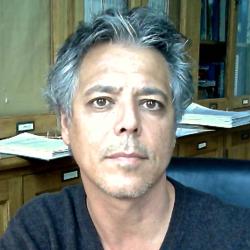Recherche
Thierry WIRTH
Directeur d'études EPHE-PSL
thierry.wirth [at] mnhn.fr
wirth [at] mnhn.fr
01 40 79 80 36
Angelika BOROWIECKA
Doctorant(e)
angelika.borowiecka [at] mnhn.fr
Pierre de VILLEMEREUIL
Maître de Conférences
pierre.de-villemereuil [at] mnhn.fr
pierre.devillemereuil [at] ephe.psl.eu
, 2017 — « The Evolutionary History, Demography, and Spread of the <span class="nocase">Mycobacterium tuberculosis</span> Complex » in Tuberculosis and the Tubercle Bacillus.. , , p. 453-473
ISBN
978-1-68367-083-4 978-1-55581-955-2
, 2016 — « Social Life in Arid Environments: The Case Study of Cataglyphis Ants » in Annual Review of Entomology.. Annual Review of Entomology vol. 62, n° 1, p. 305-321 DOI: 10.1146/annurev-ento-031616-034941
ISSN
0066-4170
ISBN
978-0-8243-0162-0
, 2016 — Inferring population size history from large samples of genome-wide molecular data - an approximate bayesian computation approach. PLoS Genetics vol. 12, n° 3, e1005877
ISSN
1553-7404
, mai 2017 — Historical introgression drives pervasive mitochondrial admixture between two species of pelagic sharks. Molecular Phylogenetics and Evolution vol. 110, , p. 122-126
ISSN
1095-9513 (Electronic) 1055-7903 (Linking)
, 2017 — Population expansions dominate demographic histories of endemic and widespread Pacific reef fishes. Scientific Reports vol. 7, , p. 40519
ISSN
2045-2322
, 2015 — Late Pleistocene molecular dating of past population fragmentation and demographic changes in African rain forest tree species supports the forest refuge hypothesis. Journal of Biogeography vol. 42, n° 8, p. 1443-1454 WOS:000357899700008
ISSN
0305-0270
, 2016 — Qualitative bias in offspring investment in a superorganism is linked to dispersal and nest inheritance. Animal Behaviour vol. 119, , p. 1-9
ISSN
00033472
, 2015 — Population Genetic History of Aristeus antennatus (Crustacea: Decapoda) in the Western and Central Mediterranean Sea. Plos One vol. 10, n° 3, e0117272
ISSN
1932-6203
, 2017 — Decreasing worker size diversity does not affect colony performance during laboratory challenges in the ant Temnothorax nylanderi. Behavioral Ecology and Sociobiology vol. 71, n° 6, p. 92
ISSN
1432-0762
, 2017 — Effect of temperature and social environment on worker size in the ant Temnothorax nylanderi. Journal of Thermal Biology vol. 67, , p. 22-29 Publisher: Elsevier tex.hal_id: hal-01517405 tex.hal_version: v1
ISSN
0306-4565









